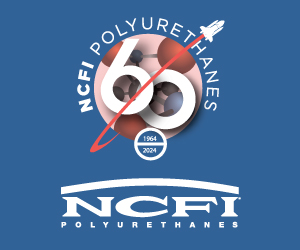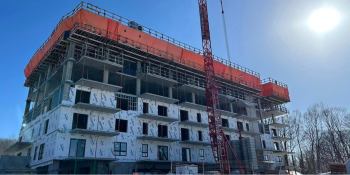Q&A Forums
comparisons Post New Topic | Post Reply
| Author | Comments |
|---|---|
|
Grady Littlehale
Posted: Sep 06, 2007 07:09 PM
|
comparisons
Mason, Do you or anyone else know of any comparisons between fiberglass and SPF that have been done in the northeastern U.S. Thought it might be helpful to have that data when talking to potential customers.
|
|
mason
Posted: Sep 06, 2007 08:37 PM
|
Dixfoam, There are tons of anecdotal evidence and some more recent laboratory wall and attic assembly testing that directly compares sprayfoam (low density and 2 lb density) to fiberglass. Fiberglass typically is 15% to 40% poorer performer than the sprayfoam assemblies at high and low temperatures, with air pressure differential included to simulate a 15 mph wind. The first side by side comparison in the Northeast occured in the 1960s. Heritiage Village, a condominium project in New Jersey had half of their units insulated with R-11 fiberglass and half insulated with 1-1/2 inches of sprayfoam. Energy usage was monitored in the units for over a year and the sprayfoam insulated units used 15-25% less energy than the fiberglass units. SPFA and your supplier should have the test results. If you have trouble obtaining the data or reports contact me at masonknowles@aol.com. (ps, I charge for the service) |
|
Terry Adams
Posted: Sep 06, 2007 09:38 PM
|
Mason, Has anyone did tests on the Gulf Coast. I sprayed a 2600 sq ft house sprayed with CC 2" walls 3" roof deck, the August bill was $108, July-$107, June-$92, May-$52. If you add 15-40% difference to a fiberglass house most people would not looking for something better. Houses of that size down here are running $300 - $400 in the summer months and I get a lot of questions about the r-value we are recommending. I wish somebody would come out with a simple formula to apply kind of like 1" of CC is equal to 4" of fiberglass. It would be a lot easier to explain to the customer. |
|
Tim O'Keefe
Posted: Sep 06, 2007 11:12 PM
|
I am sure that it is documented somewhere, but I have read and been told numerous times that 1 inch of closed cell is more effective than ANY amount of fiberglass you could stuff in a wall or roof cavity. That is pretty convincing to me. Look at those "hot box" demo units they have. You could install a skim coat of foam and completely fill the fiberglass and cellulose cavities and it would still show the difference with foam being superior. Tim Granite State Spray Foam Co. |
|
Gerry Wagoner
Posted: Sep 07, 2007 11:48 AM
|
Neal Ganser's testing data of Corbond spray foam vs. fiberglass is one of the definitive studies in the field, outside of ORNL. Neil is in Montana, I believe, and the testing was done back East. Hope that helps. |
|
Posted: Sep 07, 2007 07:39 PM
|
....and wouldnt it be nice if it was public record instead of some "sacred company document".... it would be for the good of all,, god bless america and free enterprise and the entrepenuerial spirit... |
|
mason
Posted: Sep 09, 2007 09:50 AM
|
It is a mistake to use a simple formula that 1 inch of closed cell foam is worth 4 inches of fiberglass or any similar type of statement. It will vary depending on many factors including, 1. leakiness of the building originally 2. Efficiency of the HVAC system 3. Climate 4. Type of construction, (thermal bridges, gaps in insulation, metal studs, etc.) The most recent studies were conducted by SPFA last year and the year before at Architectural Testing Inc. The testing was based on Neal Ganser's work in the 80s. SPF was installed to wall assemblies and measured for its insulation efficiency compared to fiberglass insulated wall assemblies. With a simulated 15 mph, the sprayfoam walls performed 15 to 40% more efficiently than the fiberglass insulated walls. Articles on the research are available from SPFA's website,sprayfoam.org. |
|
mason
Posted: Sep 09, 2007 09:57 AM
|
Also, look for my article "Designing with SPF" coming out in the October issue of Construction Specifier. I address the relative performance of SPF along with other design issues. It is a pretty comprehensive article and provides reputable data from research projects on SPF including, energy performance and structural enhancement |





























